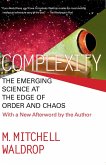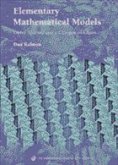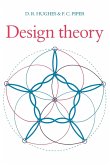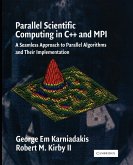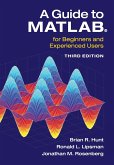Short description/annotation
Textbook on chaos; class-tested, elementary but rigorous, with applications and lots of pictures and exercises.
Main description
When new ideas like chaos first move into the mathematical limelight, the early textbooks tend to be very difficult. The concepts are new and it takes time to find ways to present them in a form digestible to the average student. This process may take a generation, but eventually, what originally seemed far too advanced for all but the most mathematically sophisticated becomes accessible to a much wider readership. This book takes some major steps along that path of generational change. It presents ideas about chaos in discrete time dynamics in a form where they should be accessible to anyone who has taken a first course in undergraduate calculus. More remarkably, it manages to do so without discarding a commitment to mathematical substance and rigour. The book evolved from a very popular one-semester middle level undergraduate course over a period of several years and has therefore been well class-tested.
Table of contents:
Preface; 1. Making predictions; 2. Mappings and orbits; 3. Periodic orbits; 4. Asymptotic orbits I: linear and affine mappings; 5. Asymptotic orbits II: differentiable mappings; 6. Families of mappings and bifurcations; 7. Graphical composition, wiggly iterates and zeros; 8. Sensitive dependence; 9. Ingredients of chaos; 10. Schwarzian derivatives and 'woggles'; 11. Changing coordinates; 12. Conjugacy; 13. Wiggly iterates, Cantor sets and chaos; Index.
Textbook on chaos; class-tested, elementary but rigorous, with applications and lots of pictures and exercises.
Main description
When new ideas like chaos first move into the mathematical limelight, the early textbooks tend to be very difficult. The concepts are new and it takes time to find ways to present them in a form digestible to the average student. This process may take a generation, but eventually, what originally seemed far too advanced for all but the most mathematically sophisticated becomes accessible to a much wider readership. This book takes some major steps along that path of generational change. It presents ideas about chaos in discrete time dynamics in a form where they should be accessible to anyone who has taken a first course in undergraduate calculus. More remarkably, it manages to do so without discarding a commitment to mathematical substance and rigour. The book evolved from a very popular one-semester middle level undergraduate course over a period of several years and has therefore been well class-tested.
Table of contents:
Preface; 1. Making predictions; 2. Mappings and orbits; 3. Periodic orbits; 4. Asymptotic orbits I: linear and affine mappings; 5. Asymptotic orbits II: differentiable mappings; 6. Families of mappings and bifurcations; 7. Graphical composition, wiggly iterates and zeros; 8. Sensitive dependence; 9. Ingredients of chaos; 10. Schwarzian derivatives and 'woggles'; 11. Changing coordinates; 12. Conjugacy; 13. Wiggly iterates, Cantor sets and chaos; Index.


